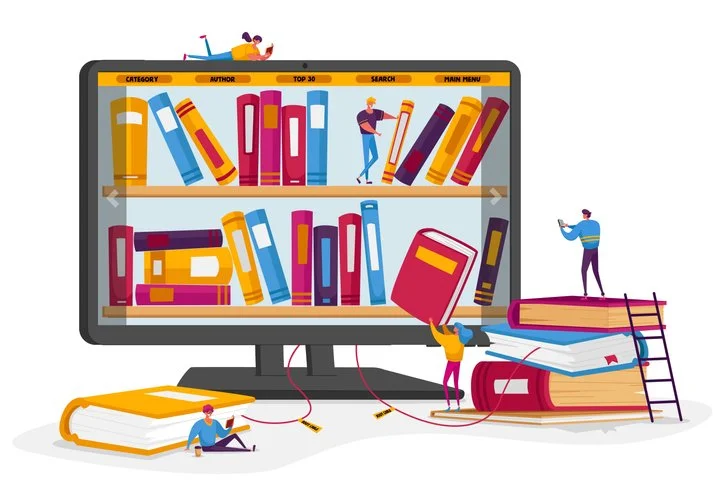More critical and ingenious teachers are required to develop creative projects where they become learning facilitators.
To face the continuous changes that impose on all the orders of life around us, such as a global economy and rapid scientific and technological advances, we find ourselves obliged to acquire new personal, social, and professional skills that nowadays are essential. The school context is no exception.
Considering that we live in the knowledge society, we are bound as teachers to implement strategies that motivate students to acquire their knowledge and develop skills and competencies to confront an ever-changing, globalized world successfully. To do this, teachers require a new educational approach, more critical and ingenious, to develop creative projects, where they are the facilitators of learning.
“When I do my planning, I must think about what will be useful for my students to face the challenges of daily life.”
The new role of teachers demands us to keep updated about advances in the matters of education. Likewise, we are interested in technological advances and, as far as possible, how to adapt new solutions for learning. Collaborating with other teachers and sharing ideas and experiences is essential to enrich our work and help our students to improve the development of their competencies. Teachers are required to impact the lives of students positively and train them so that they know how to act in different situations, value their development, and understand how to make decisions in different contexts. Nowadays, education forms competencies for life.
The New Mexican School (2019) educational model of Mexico’s Undersecretary for Basic Education, concerned about this global vision, states that it is essential to move towards a renewal of curricula “that contributes to the training of technically competent and socially committed people dedicated to solving major national and global problems, which involves strengthening citizen formation.” The analysis Higher Education in Mexico: Results and Relevance for the Labor Market (OECD, 2019), discusses the need for a program that develops both transversal and discipline-specific competencies and that, also, has teachers who are highly trained for the development of these plans and programs, thus improving the alignment between the skills they develop and the labor market that awaits graduates of middle and higher education.
In this context, we can review the success stories of educational institutions that work to create innovative educational events in different parts of the world, such as those presented at EdTech Week 2019 in Madrid, Spain:
-
Finland’s Educational System. The first national exam in Finland is conducted only at the end of general secondary education. It has a flexible model; there are no school classification lists and no inspection systems. Instead, they bring students closer to situations where they can evaluate their learning. In this way, students focus on the joy of learning rather than the pressure that an assessment brings (World Economic Forum, 2020). Subjects are eliminated and replaced with relevant “topics.”
-
Tecnológico de Monterrey is betting on the importance of education to transform Mexico. Its mission is to develop leaders with an entrepreneurial spirit, a human sense, and who are internationally competitive. Its new educational model, called Tec21 Educational Model, calls for the transformation of teacher space and time, with the objective to train flexible, challenging leaders who can develop the defined competencies.
-
Second-chance Schools. In 2016, the Spanish Association of Second Chance Schools was formed to provide individualized and comprehensive educational responses to young people who were outside the educational system or low employability. Its innovative proposal highlights flexible and customized schedules that allow young people to have continuing education. They have a tutoring program and comprehensive accompaniment with reinforcement in necessary labor skills. Priority is given to making connections in the business world and networking. They also provide full support for social needs and pay special attention to the most vulnerable young people.
The society of the future will require teachers to face increasingly complex situations such as training for a more just and democratic society, preparing our students to function in a society that changes very quickly, and helping them to become conscientious, responsible, and valued citizens.
To better understand the meaning and structural difficulties of the professionalization of teachers, in 2017, research was conducted to identify the skills that the 21st-century teacher needs to develop. The study was conducted in 10 primary and middle schools. Forty teachers who teach in the areas of communication and language, history, literature, science, and mathematics participated in learning about the strategies they had been implementing in the classroom. The teachers worked in different institutions in Mexico in the following locations: the State of Mexico, Hidalgo, León, Guadalajara, and Monterrey, and in Mexico City, in the mayorship towns of Gustavo A. Madero, Miguel Hidalgo, Cuauhtémoc, Benito Juarez, and Azcapotzalco. Below, I present the results. Teachers shall:
-
Organize and implement learning situations. Must have the ability to engage the students in the participation or development of research that provides them with tools to cope with everyday situations.
-
Manage the learning progress. Implement strategies to manage the development of learning through problem situations that are part of the reality of each student.
-
Practice strategies of inclusion. Encourage collaborative work based on tolerance and respect for the integrity of others.
-
Involve students in their learning and work. Create strategies that involve students in developing the capacity for self-assessment of their knowledge to become aware of the progress they have made.
-
Work in teams. Have the ability to engage students in teamwork and take leadership so that they can work enthusiastically toward achieving its goals and objectives.
-
Participate in school management. Get involved in school management by developing management competencies, coordination, and organization of human resources to create an excellent institution
al climate. -
Learn and apply new technologies. Be able to use new technologies, incorporating current methods, using technical and educational skills.
-
Face duties and ethical dilemmas of the profession. Face responsibilities and ethical dilemmas to cultivate communicative competency, that is, a person’s ability to compose him/herself and communicate effectively and appropriately.
-
Train continuously. Have the ability to organize and promote one’s continuous training to be continually competitive in a globalized world.
Below, I share with you an example of what I do in my teaching practice:
A few years ago, when I started in this profession, planning was carried out based on objectives that were only oriented toward behavior (conduct). They focused on learning through the thought process and thus reaching knowledge. To evaluate, one considered only how much the student knew at the end of the educational process. The teacher used to stand in front of a class with general, particular, and specific objectives and a series of activities that guided them throughout the process. The purposes were drafted for the future, as these looked to the end of the activities when students should have reached the proposed goal.
Example: The student will identify a narrative text.
The purpose was for the student to know the characteristics of the narrative text and identify it among other texts. This is no longer the case.
Currently, to develop skills in my students, I have had to shift the paradigm entirely and, at the same time, modify my way of teaching. Now, as I do my planning, I must think about what will be useful to my students to face the challenges of daily life and identify the knowledge, skills, attitudes, and values they will need to bring that knowledge into practice in different contexts. For this reason, the competencies are drafted in the present. There must be a verb, an object, and a condition. To evaluate, I must keep in mind the indicators and performance levels, because, at the end of the process, the student will have to demonstrate what level of competence he has.
Example of a competency: He is sensitive to art and participates in the appreciation and interpretation of its expressions in different literary genres, identifying works by their characteristics (narrative texts).
Attributes:
-
Analyzes and identifies the structure and characteristics of narrative texts and their subgenres.
-
Writes a text appropriate to the narrative subgenre of his choice.
Now, the student not only acquires new knowledge but also must put it into practice. Based on the characteristics and elements of the sub-genre, he will write a text that fits it (the drafting and good writing will serve him for life.) On the other hand, I no longer stand in front of the class to teach theory for two hours and fill a blackboard with pure verbiage; now, students must acquire their knowledge and put it into practice to solve everyday situations.
The activities I implement for the development of competencies are collaborative activities, research, exhibitions, prototypes, projects, case analysis, critical judgment, visits, games, technology, and more. To achieve this, I train myself to develop new skills that I apply daily in my classes to become a facilitator of learning.
I invite you to take a moment to reflect on the importance of our work and the significant influence we have in composing a better society. As teaching professionals, the more prepared we are to face the challenges of the 21st-century, the more our students will receive the tools they need for the development of skills that they will apply throughout their lives.
About the author
Luisa Guillermina Ramírez Mazariegos (luisag.ramirez@itesm.mx) teaches Communication, Literature, Spanish Language, Art, and Culture in the Humanities Department at Tecnológico de Monterrey, Hidalgo Campus. She holds a PhD in education and is the author of two books, one on reading comprehension and one on leadership. She is currently working on NOVUS projects.
This article from Observatory of the Institute for the Future of Education may be shared under the terms of the license CC BY-NC-SA 4.0 
)
)











)
Kathia Rebeca Arreola Rodríguez
Kathia Rebeca Arreola Rodríguez
Kathia Rebeca Arreola Rodríguez